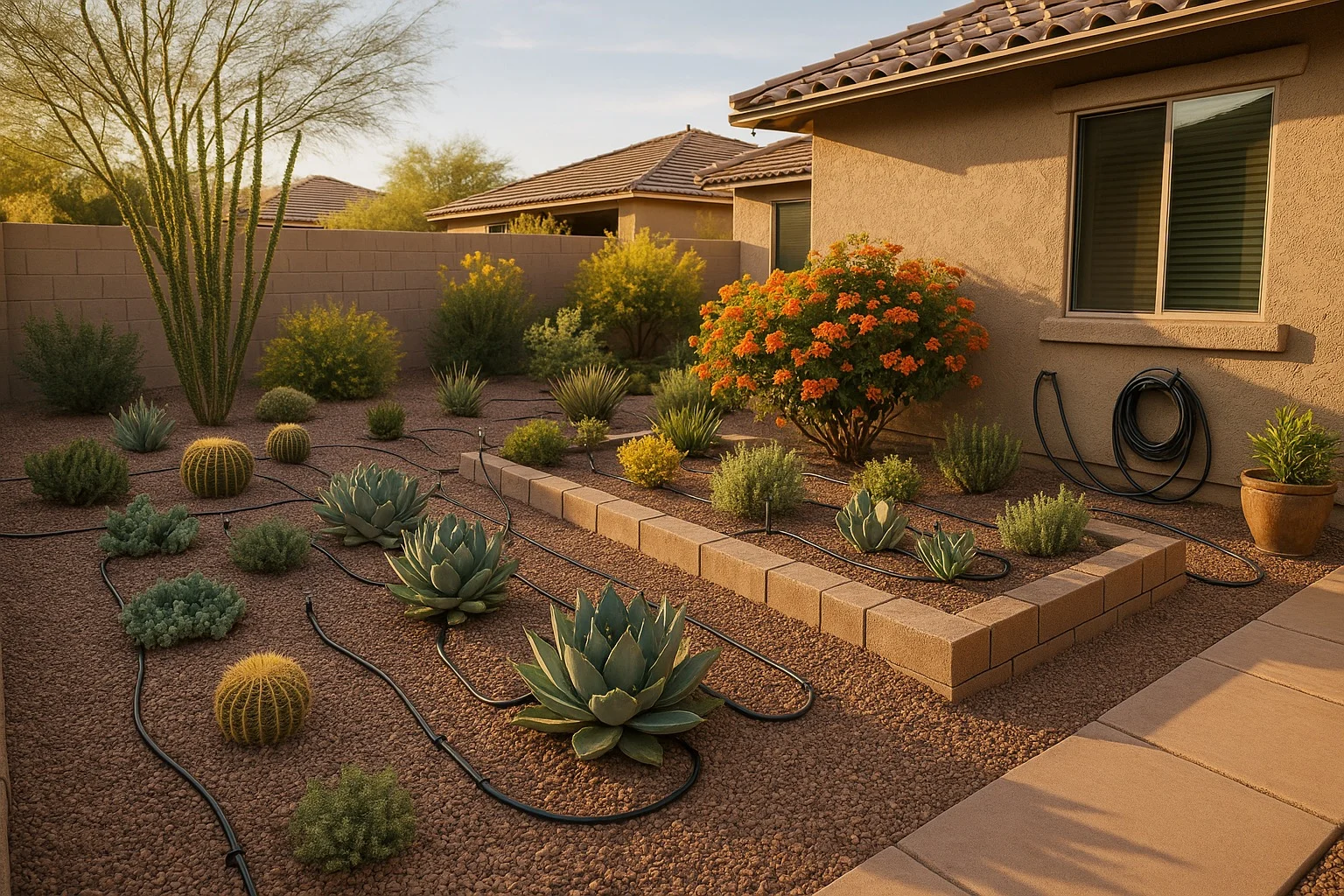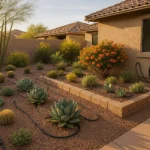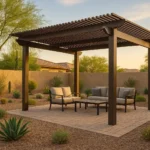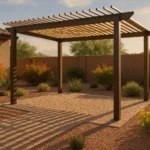Planning for drip irrigation might seem like a daunting task. But with some foresight and a bit of knowledge, you can set up a system that not only saves water but also ensures your Gilbert garden thrives. As a Queen Creek-based expert in seasonal checklists and DIY garden projects, I’m here to guide you through the process.

Understanding Drip Irrigation
Drip irrigation is a watering method that delivers water directly to the root zone of plants. This system is highly efficient as it reduces water wastage through evaporation or runoff. It’s especially useful in arid areas like Gilbert, where every drop of water counts.
Before you begin planning, it’s important to understand the components of a drip irrigation system. The main components include a water source, a backflow preventer, a pressure regulator, a filter, a mainline, and emitters. Emitters are the devices that deliver water directly to your plants. They come in various types such as drippers, micro-sprinklers, and micro-bubblers, each suitable for different watering needs.
Assessing Your Garden Needs
The first step in planning for drip irrigation is to assess the needs of your garden. Start by identifying the types of plants you have and their water requirements. For example, native plants and succulents need less water compared to tropical plants. Also, consider the soil type in your garden. Clay soil retains water longer than sandy soil, which drains quickly. These factors will determine the type of emitters you will need and their placement.
Another important aspect is to map out your garden. Sketch a layout of your garden, marking the locations of plants, pathways, and structures. This map will serve as a guide when you start laying out your drip irrigation system.
Choosing the Right Components
With a clear understanding of your garden’s needs, you can now start choosing the right components for your drip irrigation system. The type of backflow preventer, pressure regulator, and filter you choose will depend on your local water source and its quality. For Gilbert, where the water is typically hard, a good filter is essential to prevent clogging of the emitters.
When choosing emitters, consider the water needs of your plants and the type of soil in your garden. Drippers are ideal for low water use plants and sandy soils, while micro-sprinklers and bubblers are better suited for high water use plants and clay soils. Also, consider the spacing between your plants. The emitters should be placed so that they provide water to the entire root zone of the plants.
Installing Your Drip Irrigation System
Once you have all the necessary components, you can start installing your drip irrigation system. Begin by installing the backflow preventer, pressure regulator, and filter at your water source. Then lay out the mainline according to your garden map, securing it with stakes. Next, install the emitters at the appropriate locations. Finally, flush the system to remove any debris before installing the end caps.
Installing a drip irrigation system can be a do-it-yourself project, but if you’re not comfortable with it, consider hiring a professional. Remember, the initial cost of setting up a drip irrigation system can be higher than traditional watering methods, but the water savings and the health of your garden will make it worthwhile.
Maintaining Your Drip Irrigation System
Maintenance is key to the success of your drip irrigation system. Regularly check for leaks, clogged emitters, and pressure issues. During the hot Gilbert summers, water requirements will be higher, so adjust your watering schedule accordingly. In winter, you might need to winterize your system to prevent damage from freezing.
With regular maintenance, your drip irrigation system will continue to save water and keep your garden thriving for years to come. As a mom-next-door in Gilbert, I can attest to the benefits of having a well-planned drip irrigation system in our dry climate. Not only does it save water, but it also takes the guesswork out of watering and allows more time for other gardening activities.
Planning for Future Changes
When planning your drip irrigation system, consider future changes in your garden. You might want to add more plants, change the types of plants, or even redesign your garden layout. Therefore, it’s a good idea to design your system with some flexibility. For example, use tubing with extra emitters or install a system that allows for easy addition of new lines. This way, your system can evolve with your garden.
Planning ahead for drip irrigation is not only a smart move for water conservation in Gilbert but also a way to ensure a healthy and beautiful garden. So, roll up your sleeves, start planning, and transform your watering routine!





